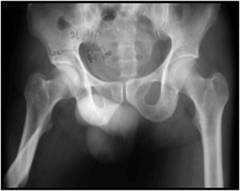Titanium Reconstruction Nailing For Sub - Trochanteric Fractures of Femur
Abstract
Introduction: Sub-trochanteric fractures of femur present a challenging situation to the orthopaedic surgeons world-wide. Complications like malunion, nonunion and implant failure are high. Several implants have been designed for fixation of sub-trochanteric fractures. In this study we analyze the functional and radiological outcome of sub-trochanteric fractures treated by Titanium Reconstruction nails.
Methods: This is a prospective study. 20 patients with sub-trochanteric fractures treated by Titanium reconstruction nail from June 2012 to December 2014 were included in the study. We analyzed these 20 patients for functional and radiological outcome and complications.
Results: The fracture union rate was 100 % and the average union time was 14 weeks. 3 patients had varus malunion and shortening was noted in 4 patients. 85% of the patients had excellent to good functional outcome.
Conclusion: We concluded that Titanium Reconstruction nail is an ideal implant for sub-trochanteric fractures with an excellent union rate and a very good functional outcome.
Downloads
References
2. Seinsheimer F. Subtrochanteric fractures of the femur. J Bone Joint Surg Am. 1978 Apr;60(3):300-6. [PubMed]
3. Bedi A, Toan Le T. Subtrochanteric femur fractures. Orthop Clin North Am. 2004 Oct;35(4):473-83. [PubMed]
4. Kinast C, Bolhofner BR, Mast JW, Ganz R. Subtrochanteric fractures of the femur. Results of treatment with the 95 degrees condylar blade-plate. Clin Orthop Relat Res. 1989 Jan;(238):122-30. [PubMed]
5. Nungu KS, Olerud C, Rehnberg L. Treatment of subtrochanteric fractures with the AO dynamic condylar screw. Injury. 1993 Feb;24(2):90-2. [PubMed]
6.Sims SH. Subtrochanteric femur fractures. Orthop Clin North Am. 2002 Jan;33(1):113-26, viii.
7. Lunsjo K, Ceder L, Tidermark J, Hamberg P, Larsson BE, Ragnarsson B, Knebel RW, Allvin I, Hjalmars K, Norberg S, Fornander P, Hauggaard A, Stigsson L. Extramedullary fixation of 107 subtrochanteric fractures: a randomized multicenter trial of the Medoff sliding plate versus 3 other screw-plate systems. Acta Orthop Scand. 1999;70:459–466.
8. Kyle RF, Gustilo RB, Premer RF. Analysis of six hundred and twenty-two intertrochanteric hip fractures. J Bone Joint Surg Am. 1979 Mar;61(2):216-21. [PubMed]
9. Cochran, G.V.B. Implantation of strain gages on bone in vivo. J. Biomech. 1972;5:119–123.
10. Fielding JW, Cochran GV, Zickel RE Biomechanical characteristics and surgical management of subtrochanteric fractures. Orthop Clin North Am. 1974 Jul;5(3):629-50.
11. Koch, JC. The laws of bone architecture. Am J Anat. 1917;21(2):177–298.
12. Frankel, VH, Burstein, AH. Orthopaedic Biomechanics. Lea & Febiger, Philadelphia; 1970. [PubMed]
13. French BG, Tornetta P, 3rd. Use of an interlocked cephalomedullary nail for subtrochanteric fracture stabilization. Clin Orthop Relat Res 1998-348:95-100. [PubMed]
14. Taylor DC, Erpelding JM, Whitman CS, Kragh JF Jr. Treatment of comminuted subtrochanteric femoral fractures in a young population with a reconstruction nail. Mil Med. 1996 Dec;161(12):735-8. [PubMed]
15. Hoover GK, Browner BD, Cole JD, Comstock CP, Cotler HB. Initial experience with a second generation locking femoral nail: the Russell-Taylor reconstruction nail. Contemp Orthop. 1991 Sep;23(3):199-208.



 OAI - Open Archives Initiative
OAI - Open Archives Initiative


